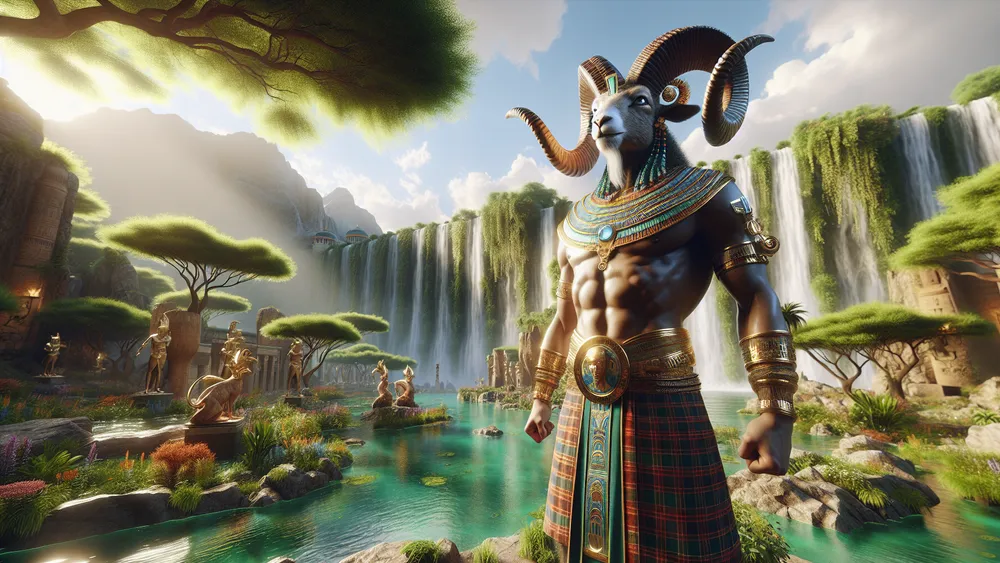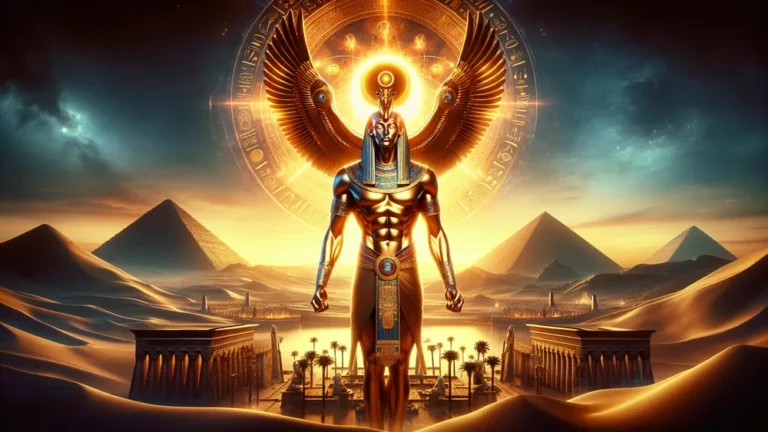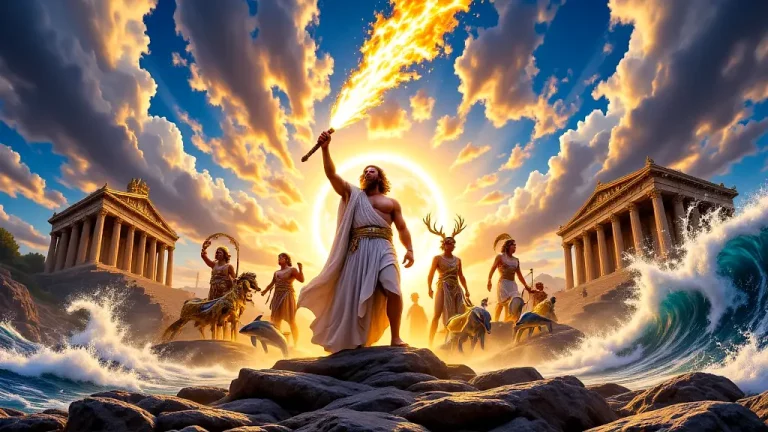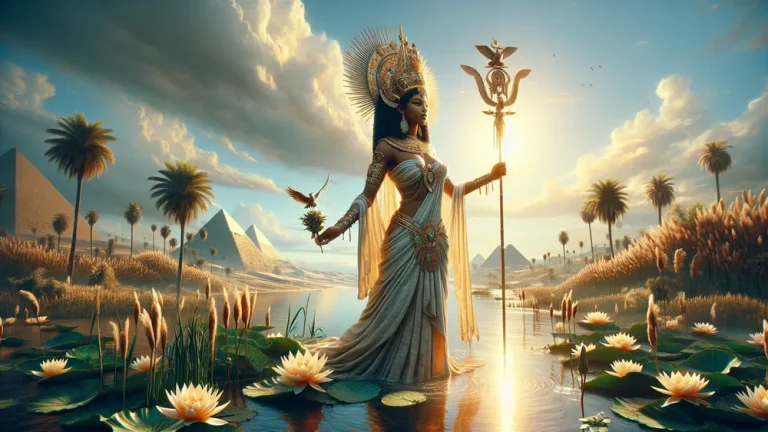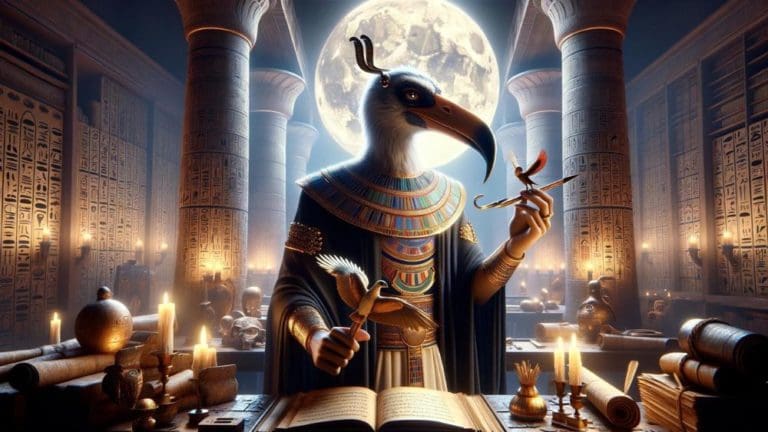Khnum: Egyptian God Of Fertility And Creation
Khnum, a big name in ancient Egyptian mythology, stands out as the god of fertility and creation. People really look up to him for shaping humans and gods. His influence? It’s everywhere in Egyptian culture. You see it in their myths, religious practices, art, and even literature. This blog post dives into Khnum’s story, his roles, and how folks worship him.
Key Points:
- Khnum is the Egyptian god of fertility and creation.
- His name means to create or to mold.
- Khnum is known for creating humans and gods by molding them on a potter’s wheel.
- He is linked to water and fertility and controls the flooding of the Nile.
- Worship of Khnum involves offering bread, beer, and pottery.
- Khnum is often represented in art with a ram’s head and a potter’s wheel.
- Khnum is mentioned in hymns and prayers that celebrate his role as a creator and protector.
We’re talking about myths, temples, rituals, and art. By checking out all these aspects, we get a clearer picture of how this deity impacts the spiritual and daily lives of the ancient Egyptians.
The Origins and Etymology of Khnum
So, to get Khnum’s full story, we need to start at the beginning. Let’s dig into where his name comes from and how people began to worship him over the years.
The Name and Meaning of Khnum
Khnum’s name comes from the ancient Egyptian word “khnm,” which means “to create” or “to mold.” This fits perfectly with his role as a creator god. You often see him depicted as a potter, shaping humans and gods on his wheel. In their language, his name really highlights his importance in creation.
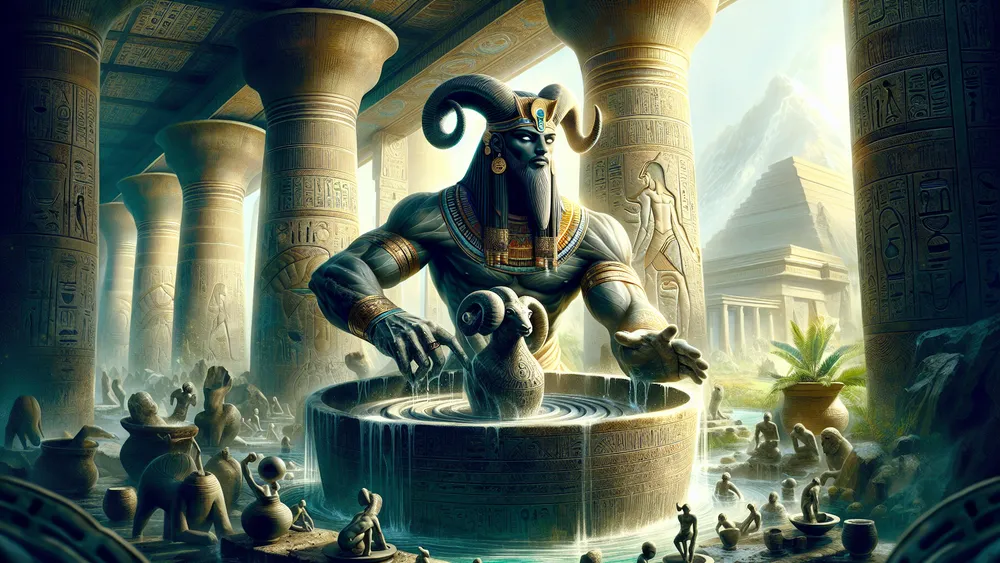
Early texts from the Old Kingdom already mention him, showing he’s been a big deal for a long time. Over the years, Khnum’s role grows. He starts as a local god of the Nile’s cataracts but eventually becomes a major creator god linked to fertility and water. His worship spreads all over Egypt, and many temples pop up in his honor, showing just how important he becomes.
- Khnum’s earliest mentions: Found in Pyramid Texts from the Old Kingdom.
- Depictions in art: Often shown with a ram’s head, symbolizing strength and fertility.
- Temples dedicated to Khnum: Notable ones include those at Elephantine and Esna.
- Role in creation myths: Believed to fashion humans from clay on his potter’s wheel.
Khnum’s evolution from a local god to a major creator god symbolizes his significance in Egyptian mythology and culture, which is emphasized by his name meaning to create or to mold in ancient Egyptian.
Khnum’s Role in Egyptian Mythology
So, we’ve got a handle on where Khnum comes from. Now, let’s dive into what he actually does in Egyptian mythology. His roles and stories are super interesting.
Creator of Mankind and Gods
Khnum plays a special role as a creator god in Egyptian mythology. You often see him shaping humans on a potter’s wheel, making their bodies from clay. This ties him to other creator gods like Ptah and Atum, who also help form the world and its beings. In different myths, Khnum doesn’t just create humans; he also makes the bodies of gods.

He works with other deities, like Heket, the frog-headed goddess of childbirth, who breathes life into the forms he molds. These stories show how important he is in the divine world and how he teams up with other gods to keep things in order.
- Khnum’s potter’s wheel: Symbolizes his role in shaping life.
- Connection to Ptah and Atum: Other major creator gods in Egyptian mythology.
- Interaction with Heket: She breathes life into the forms he creates.
- Myths involving Khnum: Often depict him working alongside other deities.
Guardian of the Nile
Khnum plays a key role as the guardian of the Nile River. He controls the Nile’s flooding, which is super important for farming and everyday life in ancient Egypt. The river’s annual floods bring rich silt, making the land fertile and great for growing crops. This link between water and fertility ties right into Khnum’s job as a creator god.
You often see him in art and literature with symbols of water and fertility, showing how crucial he is for sustaining life. His connection to the Nile really highlights how essential water is for creation and growth in Egyptian mythology.
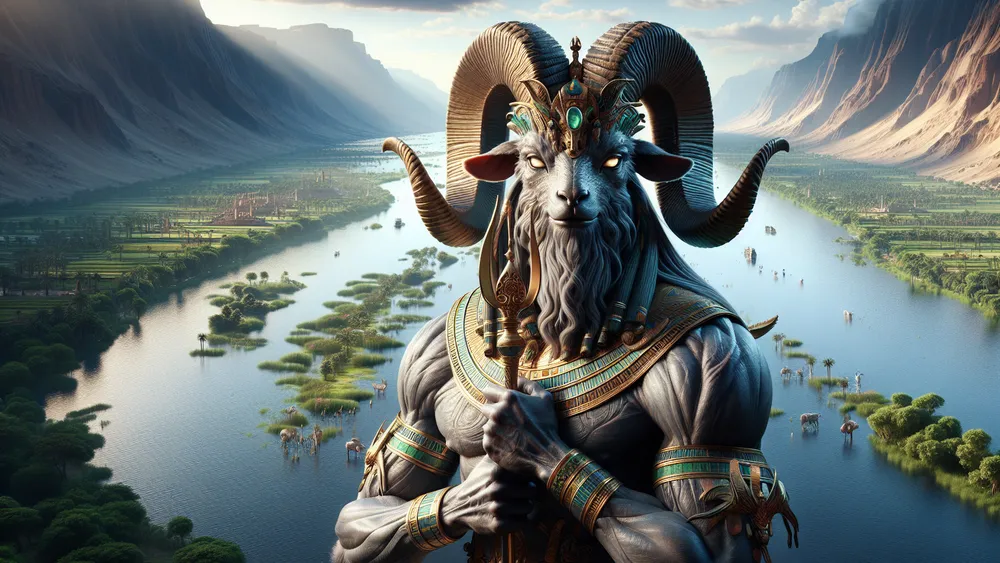
| Aspect | Details |
|---|---|
| Control of Inundation | Khnum regulates the Nile’s flooding, ensuring fertile lands. |
| Importance of the Nile | The river’s annual floods are crucial for agriculture and daily life. |
| Symbolism in Art | Depictions often include water and fertility symbols linked to Khnum. |
| Role in Creation | Water symbolizes life and creation, central to Khnum’s divine duties. |
Worship and Temples Dedicated to Khnum
So, we’ve covered Khnum’s roles. Now, let’s dive into how people worship him and the amazing temples they built in his honor.
Major Temples and Worship Sites
Khnum’s worship revolves around some pretty significant temples. The Temple at Elephantine stands out as one of the most important ones. It’s on an island in the Nile, making it a major spot for Khnum’s followers. You also find other notable worship sites at Esna and Antinoe. These places are special too. Architecturally, Khnum’s temples have some unique features like elaborate carvings and sacred pools that show his link to water and creation.
These temples aren’t just buildings; they play a big role in local and national religious practices, serving as hubs for rituals and ceremonies that honor Khnum’s divine powers.

- Temple at Elephantine: Major religious site on an island in the Nile.
- Esna and Antinoe: Other important worship sites for Khnum.
- Architectural features: Elaborate carvings and sacred pools.
- Role in religious practices: Centers for rituals and ceremonies.
Khnum’s temples, particularly the Temple at Elephantine and others at Esna and Antinoe, are crucial for his followers and play a central role in religious practices due to their unique architectural features and significance as hubs for rituals and ceremonies that honor his divine powers.
Rituals and Offerings
People honor Khnum with all sorts of rituals. They offer bread, beer, and pottery to symbolize sustenance and creation, which ties back to Khnum’s role as a creator god. There are also special ceremonies during key times of the year, like when the Nile floods, which is super important for farming. Priests have a big job here.
They run the ceremonies, keep the temples in good shape, and make sure the offerings are just right. Regular folks get involved too. They bring their offerings and join in the festivals, showing their devotion to Khnum.
- Types of offerings: Bread, beer, and pottery.
- Seasonal ceremonies: Marking the Nile’s inundation.
- Priests’ duties: Conducting ceremonies and maintaining temples.
- Public participation: Bringing offerings and attending festivals.
People honor Khnum through various rituals and offerings, which are crucial for symbolizing sustenance, creation, and devotion to the creator god.
Artistic Representations of Khnum
Alright, let’s dive into how Khnum shows up in art and literature. These depictions really highlight his importance in ancient Egyptian culture.
Khnum in Literature and Hymns
You find Khnum mentioned a lot in ancient texts, especially in hymns and prayers that praise him. These writings celebrate his role as a creator and protector. Literary works also talk about Khnum, showing how important he is in various myths. These texts help spread Khnum’s cult, making his worship more common. They also keep his myths and stories alive, so people remember how significant he is.
The hymns and prayers not only honor Khnum but also reinforce his place among the Egyptian gods.
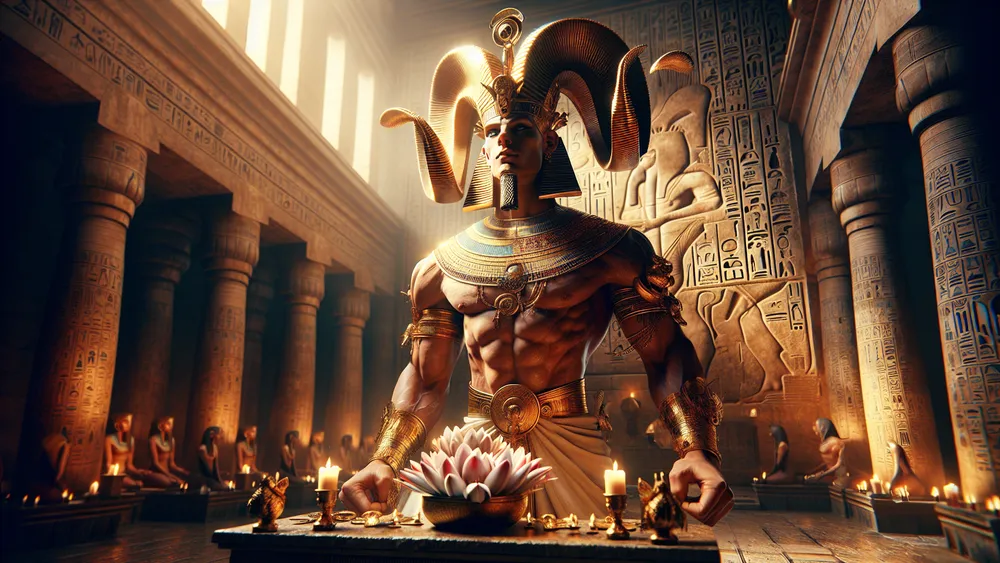
- Hymns and prayers: Celebrate Khnum’s role as a creator.
- Literary works: Show his importance in myths.
- Spreading the cult: Make Khnum’s worship more common.
- Preservation: Keep his significance alive.
Pantheon of Egyptian Gods
Ancient Egypt’s pantheon is full of fascinating gods like Ra, Osiris, and Isis. Each one has a special role in mythology and daily life. If you’re curious, check out this list of all the Egyptian gods for more details.
FAQs
1. Who were Khnum’s consorts and children?
Khnum’s consorts included the goddesses Satis and Anuket, and his children were often considered to be Heka and possibly other deities associated with the Nile and fertility.
2. How did Khnum influence daily life in ancient Egypt?
Khnum influenced daily life in ancient Egypt by being central to rituals and beliefs related to fertility, creation, and the annual flooding of the Nile.
3. What are some modern interpretations of Khnum?
Some modern interpretations of Khnum focus on his symbolism as a creator and sustainer, often highlighting his connection to environmental and fertility themes.
4. How is Khnum represented in contemporary media?
Khnum is represented in contemporary media primarily through documentaries, books, and video games that explore ancient Egyptian mythology.

